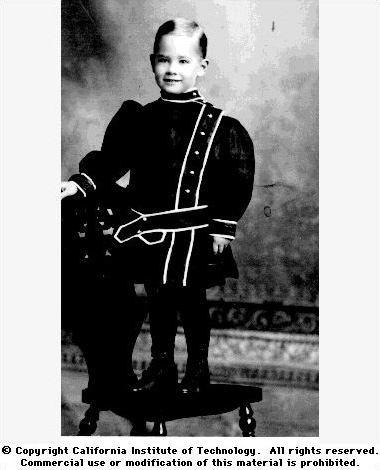Concept 16 One gene makes one protein.












Young George Beadle, around 1908.
George Beadle at work in his lab at Stanford.
Neurospora mutants laid out to show the experimental design.
1936 diary entry of Frank Blair Hanson, then President of the Rockefeller Foundation. He noted that Beadle is a "man to watch." Also, note the salary for graduate students.
The Rockefeller Foundation funded Beadle's experiments. This 1943 letter is a progress report Beadle wrote to the Rockefeller President.
Beadle and assistant in the Neurospora storeroom at Stanford, 1949.
Telegram sent to Edward Tatum telling him that he, George Beadle and Joshua Lederberg will share the 1958 Nobel Prize in Physiology or Medicine.
George Beadle at the Nobel Awards ceremonies.
After retirement in 1969, Beadle started research on the origin of maize. Throughout his life, Beadle maintained an interest in agriculture and gardening—the farm boy Nobel Laureate.


In 1928, when Thomas Hunt Morgan moved to Caltech, a colleague persuaded him to take some Neurospora cultures and try it as a genetic system. Carl Lindegren, one of Morgan's graduate students, worked out the genetics of Neurospora, thus paving the way for Beadle's experiments.

After Neurospora, Edward Tatum worked on and found nutritional mutants in E. coli bacteria. What are the advantages of using bacteria as a model system for research?
Loading image. Please wait

Young George Beadle, around 1908.

 DNA and proteins are key molecules of the cell nucleus.
DNA and proteins are key molecules of the cell nucleus. One gene makes one protein.
One gene makes one protein. A gene is made of DNA.
A gene is made of DNA. Bacteria and viruses have DNA too.
Bacteria and viruses have DNA too. The DNA molecule is shaped like a twisted ladder.
The DNA molecule is shaped like a twisted ladder. A half DNA ladder is a template for copying the whole.
A half DNA ladder is a template for copying the whole. RNA is an intermediary between DNA and protein.
RNA is an intermediary between DNA and protein. DNA words are three letters long.
DNA words are three letters long. A gene is a discrete sequence of DNA nucleotides.
A gene is a discrete sequence of DNA nucleotides. The RNA message is sometimes edited.
The RNA message is sometimes edited. Some viruses store genetic information in RNA.
Some viruses store genetic information in RNA. RNA was the first genetic molecule.
RNA was the first genetic molecule. Mutations are changes in genetic information.
Mutations are changes in genetic information. Some types of mutations are automatically repaired.
Some types of mutations are automatically repaired.